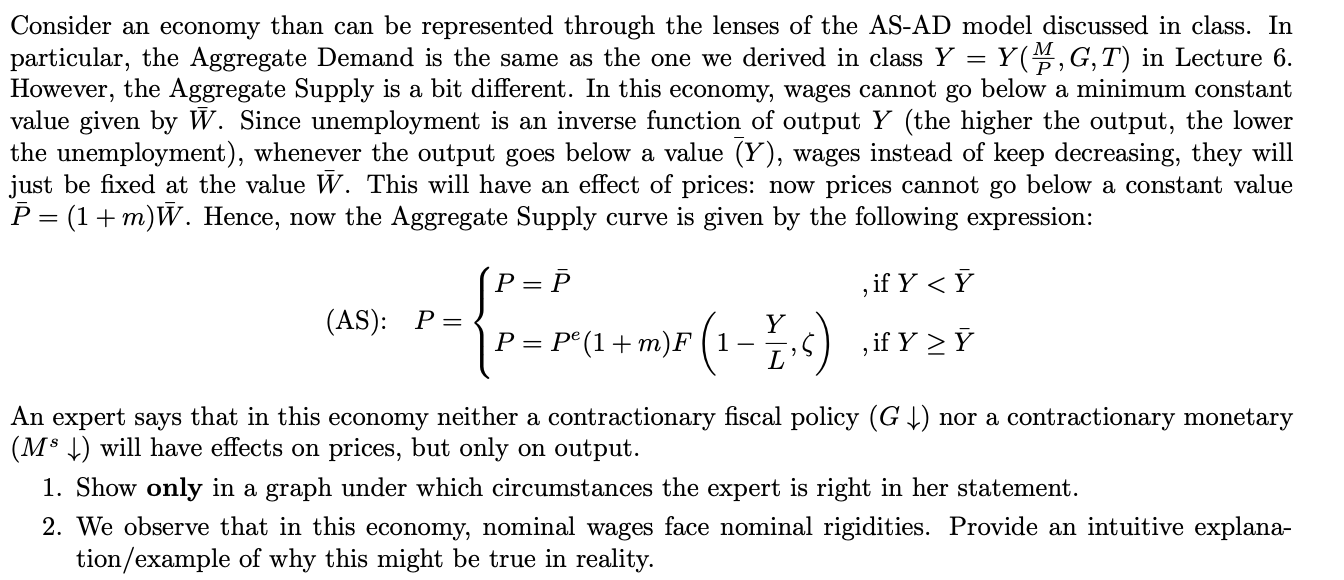(Solved): Consider an economy than can be represented through the lenses of the AS-AD model discussed in class ...
Consider an economy than can be represented through the lenses of the AS-AD model discussed in class. In particular, the Aggregate Demand is the same as the one we derived in class Y=Y((M)/(P),G,T) in Lecture 6 . However, the Aggregate Supply is a bit different. In this economy, wages cannot go below a minimum constant value given by ()/(bar) (W). Since unemployment is an inverse function of output Y (the higher the output, the lower the unemployment), whenever the output goes below a value ()/(bar) (W). This will have an effect of prices: now prices cannot go below a constant value ()/(bar) (P)=(1+m)/(b)ar (W). Hence, now the Aggregate Supply curve is given by the following expression: (AS):,P={(P()/(b)=ar (P), if Y()/(b)=ar (Y)):} An expert says that in this economy neither a contractionary fiscal policy (Gdarr)M^(s)darr
